Author: Rachel Bridwell, MD (@rebridwell, EM Attending Physician) // Reviewed by: Alex Koyfman, MD (@EMHighAK, EM Attending Physician, UTSW / Parkland Memorial Hospital); Brit Long, MD (@long_brit, EM Attending Physician, San Antonio, TX)
Welcome to EM@3AM, an emDOCs series designed to foster your working knowledge by providing an expedited review of clinical basics. We’ll keep it short, while you keep that EM brain sharp.
A 42 year-old male presents with abdominal pain and fevers for 72 hours, with nausea and vomiting for 24 hours. He has a history of end stage renal disease and has been on peritoneal dialysis for 5 years. He also has a history of hypertension, hyperlipidemia, and diabetes.
Triage vital signs (VS): BP 105/60, HR 121, T 101.4 temporal, RR 24, SpO2 98% on room air. Pertinent physical examination findings include a tender peritoneal dialysis site and diffuse abdominal tenderness, but no erythema overlying the PD site.
What’s the next step in your evaluation and treatment?
Answer: Peritonitis secondary to peritoneal dialysis (PD)
Epidemiology of PD:
- Less expensive, at home dialysis option compared to hemodialysis
- Less dietary restriction, greater independence and mobility
- Improved preservation of renal function
Types of PD Emergencies:
- Infectious
- Bacterial Peritonitis
- Most common PD complication – 1 case per patient per year
- Contributes to morbidity and mortality – accounts for 1.9% of PD related deaths
- Risk Factors: Obesity, depression, hypokalemia, recent invasive interventions (e.g. colonoscopy), lack of vitamin D supplementation, wet contamination, prior hemodialysis, nasal aureus carrier, previous exit site infection
- Tuberculoid Peritonitis
- Occurs from rupture of a scrofula
- Only 14% of these patients will demonstrate chest radiographic evidence of tuberculosis
- Develops within 12 months of starting PD
- Occurs secondary to decreased cellular immunity
- Occurs from rupture of a scrofula
- Catheter Exit Site and Tunnel Infections
- 39% of catheter removals occur because of recalcitrant infections
- Bacterial Peritonitis
- Structural—PD catheter should be located in a dependent area, in females the rectouterine pouch and in males the retrovesical pouch
- Malposition
- Migration occurs usually within the first 12 months
- Reduces drainage, increases risk of peritonitis, localized pain, and fluid overload
- Migration occurs usually within the first 12 months
- Kinking
- Difficulty instilling dialysate
- Hernias
- Sudden increase in abdominal pressure (e.g. coughing)
- Most common in those with polycystic kidney disease
- Usually from umbilicus
- 25% will occur from abdominal wall
- Can migrate thoracically from Morgagni and Bochdalek’s hernias
- Present with dialysate infusion, weight gain, edema
- Leakage
- Occurs in up to 5% of PD patients
- Can present with genital swelling or abdominal swelling from extension along Scarpa’s fascia
- Entrapment
- Adhesions or abdominal organs decrease the surface area available for dialysis
- In history of peritonitis, more likely to be secondary to loculations
- Adhesions or abdominal organs decrease the surface area available for dialysis
- Malposition
- Other
- Sclerosing Encapsulating Peritonitis—Inflammatory process in which thick fibrous connective tissue surrounds bowels with dilated lymphatics
- Occurs in 0.9-7.3% of PD patients, more common in those with a history of peritonitis
- Presents with abdominal pain or cramping, weight loss, anorexia, loss of ultrafiltration, bloody effluent
- Hepatic Steatosis
- Present in 62% of patients undergoing PD with intraperitoneal insulin for patients with diabetes mellitus
- Intraperitoneal insulin provides better glycemic control but with the risk of hepatic steatosis
- Present in 62% of patients undergoing PD with intraperitoneal insulin for patients with diabetes mellitus
- Sclerosing Encapsulating Peritonitis—Inflammatory process in which thick fibrous connective tissue surrounds bowels with dilated lymphatics
Evaluation:
- Assess ABCs and obtain VS
- May demonstrate fever, tachycardia, hypotension if infectious complication, edema seen in obstructive or other mechanical issues
- Weight loss and night sweats may be seen in tuberculoid peritonitis
- Perform a complete physical examination
- PD site: Exit site infections may demonstrate erythema and purulence, while tunnel infections may demonstrate tenderness or may be clinically undetectable
- Abdomen: Tenderness in peritonitis as well as mechanical complications, hepatomegaly in hepatic steatosis
- Lower extremities: Assess for edema
- May demonstrate fever, tachycardia, hypotension if infectious complication, edema seen in obstructive or other mechanical issues
- Laboratory evaluation:
- Complete blood count with differential, electrolytes, renal/liver function, blood gas with lactate
- Peritoneal fluid culture if concern for infectious complications, consider fungal culture
- Establishes causative organism in 75% of cases within 3 days
- In bacterial peritonitis, cell count>100 cells/mm3 with > 50% neutrophils clinch diagnosis in proper clinical picture
- Imaging
- Ultrasound
- May demonstrate increased echogenicity of infected dialysate in bacterial peritonitis
- Can aid in finding tunnel site infections with fluid and a hypoechoic area surrounding the thin hyperechoic bands of the catheter
- Can demonstrate subcapsular hepatic steatosis
- Abdominal radiographs
- Will demonstrate catheter kinking
- Computed Tomography
- May demonstrate loculations or isolated fluid collections in bacterial peritonitis
- Can show enhanced mesenteric thickness of >15 mm or enlarged lymph nodes in tuberculoid peritonitis
- Helpful in detecting hernias as well as leakages
- Diagnostic imaging of choice for sclerosing encapsulating peritonitis with peritoneal enhancement/calcifications, bowel tethering posterior to fluid collections
- Magnetic Resonance Imaging
- Dialysate is often used as contrast agent to mitigate risk for nephrogenic systemic fibrosis
- Ultrasound
Treatment:
- ABCs—Resuscitation in the setting of any infectious complications
- Antibiotics—Bacterial peritonitis
- Intraperitoneal antibiotics without interruption of PD
- Vancomycin (15-30 mg/kg) + Cefepime (1 g daily) or ceftazidime (1-5 grams daily) OR
- Vancomycin + ciprofloxacin
- Intermittent vancomycin dosing is equivalent to continuous vancomycin
- Allergies
- Aztreonam for MRSA coverage
- Can also use aminoglycosides for gram negative coverage in those with cephalosporin allergies, does not appear to affect residual renal function
- Pharmacy consultation for intraperitoneal antibiotic dosing
- Anti-tuberculoid:
- 4 drug regimen of rifampicin, isoniazid (with pyridoxine), pyrazinamide, ofloxacin
- In sclerosing encapsulating peritonitis, early cessation of PD is paramount as well as surgery to relieve bowel obstruction and consideration of prednisolone and cyclosporin for mitigation of inflammation
- Consultation:
- Nephrology for PD recommendations
- IR may aid in removal or assessment of catheter malfunction or infection
- In malposition, any repositioning must occur under sterile conditions
- Can consider discharge some peritonitis patients but many of these patients will require admission with expert consultation for mechanical issues
Pearls:
- Peritonitis is common, occurring nearly annually for PD patients
- Peritonitis predisposes PD patients to a myriad of further infections and mechanical complications
- Catheter complications may present with edema and/or reduced dialysate yield
- Sclerosing Encapsulating Peritonitis carries a high mortality and can be prevented with early recognition and cessation of PD
References:
- Stuart S, Booth TC, Cash CJ, Hameeduddin A, Goode JA, Harvey C, Malhotra A. Complications of continuous ambulatory peritoneal dialysis. Radiographics. 2009 Mar-Apr;29(2):441-60. doi: 10.1148/rg.292085136. PMID: 19325058.
- Feriani M, Dell’Aquila R, La Greca G. The treatment of diabetic end-stage renal disease with peritoneal dialysis. Nephrol Dial Transplant 1998;13 (suppl 8):53–56.
- Khalili K, Lan FP, Hanbidge AE, Muradali D, Oreopoulos DG, Wanless IR. Hepatic subcapsular steatosis in response to intraperitoneal insulin delivery: CT findings and prevalence. AJR Am J Roentgenol 2003;180(6):1601–1604.
- Slingeneyer A. Preliminary report on a cooperative international study on sclerosing encapsulating peritonitis. Contrib Nephrol 1987;57:239–247.
- Niaudet P, Berard E, Revillon Y, Lothon M, Broyer M. Sclerosing encapsulating peritonitis in children. Contrib Nephrol 1987;57:230–238.
- Gokal R, Jakubowski C, King J, et al. Outcome in patients on continuous ambulatory peritoneal dialysis and haemodialysis: 4-year analysis of a prospective multicentre study. Lancet 1987;2(8568): 1105–1109.
- Cho Y, Johnson DW. Peritoneal dialysis-related peritonitis: towards improving evidence, practices, and outcomes. Am J Kidney Dis2014; 64:278–89.
- Lui SL, Cheng SW, Ng F, Ng SY, Wan KM, Yip T, et al. Cefazolin plus netilmicin versus cefazolin plus ceftazidime for treating CAPD peritonitis: effect on residual renal function. Kidney Int2005; 68:2375–80.
- Wong KM, Chan YH, Cheung CY, Chak WL, Choi KS, Leung SH, et al. Cefepime versus vancomycin plus netilmicin therapy for continuous ambulatory peritoneal dialysis associated peritonitis. Am J Kidney Dis 2001; 38:127–31.
- Goffin E, Herbiet L, Pouthier D, Pochet JM, Lafontaine JJ, Christophe JL, et al. Vancomycin and ciprofloxacin: systemic antibiotic administration for peritoneal dialysis-associated peritonitis. Perit Dial Int2004; 24:433–9.
- Baker RJ, Senior H, Clemenger M, Brown EA. Empirical aminoglycosides for peritonitis do not affect residual renal function. Am J Kidney Dis2003; 41:670–5.
- Li PK, Szeto CC, Piraino B, et al. ISPD Peritonitis Recommendations: 2016 Update on Prevention and Treatment [published correction appears in Perit Dial Int. 2018 Jul-Aug;38(4):313]. Perit Dial Int. 2016;36(5):481-508. doi:10.3747/pdi.2016.00078
- Hanbidge AE, Lynch D, Wilson SR. US of the peritoneum. RadioGraphics 2003;23(3):663–684; discussion 684–685.
- Lindblad AS. Complications of peritoneal catheters. In: Lindblad AS, Novak JW, Nolph KD, eds. Continuous ambulatory dialysis in the USA: final report of the National CAPD Registry. Dordrecht, the Netherlands: Kluwer Academic, 1989; 157–166.
- Leblanc M, Ouimet D, Pichette V. Dialysate leaks in peritoneal dialysis. Semin Dial 2001;14(1):50–54.
- Tzamaloukas AH, Gibel LJ, Eisenberg B, et al. Early and late peritoneal dialysate leaks in patients on CAPD. Adv Perit Dial 1990;6:64–71.
- Slingeneyer A. Preliminary report on a cooperative international study on sclerosing encapsulating peritonitis. Contrib Nephrol 1987;57:239–247.
- Wanless IR, Bargman JM, Oreopoulos DG, Vas SI. Subcapsular steatonecrosis in response to peritoneal insulin delivery: a clue to the pathogenesis of steatonecrosis in obesity. Mod Pathol 1989;2(2): 69–74.
- Torun D, Oguzkurt L, Sezer S, et al. Hepatic sub-capsular steatosis as a complication associated with intraperitoneal insulin treatment in diabetic peri-toneal dialysis patients. Perit Dial Int 2005;25(6): 596–600.


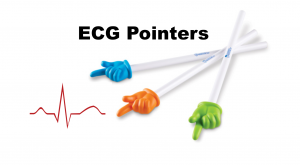


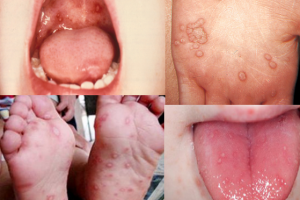
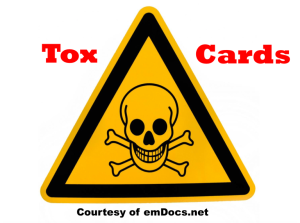
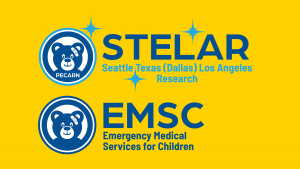
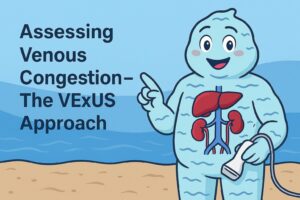
1 thought on “EM@3AM: Peritoneal Dialysis Emergencies”
Pingback: Lakeland Health EM Blog